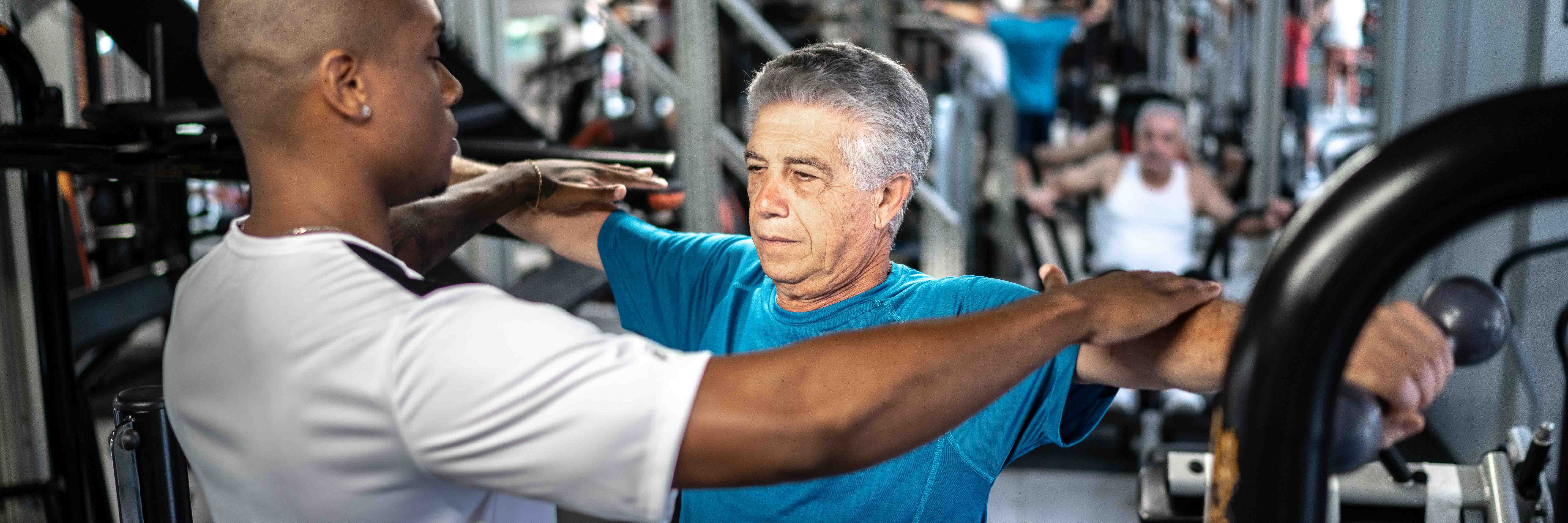Introduction to Athletics Training
Athletics is a broad term that includes a wide range of sports and physical activities. For those stepping into the world of athletics, it’s crucial to understand the fundamentals of training. This article aims to shed light on athletics training tips for beginners, providing a comprehensive guide to enhance performance and prevent injuries.
Athletics training isn’t merely about running faster or jumping higher. It’s about building a strong foundation of physical fitness, incorporating strength, endurance, flexibility, and balance. A well-rounded training program is fundamental to achieving success in athletics.
Starting an athletics training program can seem daunting, especially for those without prior experience. However, understanding the basics and implementing effective strategies can significantly ease the process.

One of the most important aspects of athletics training is understanding the concept of progressive overload. This principle suggests gradually increasing the intensity of your training to continuously challenge your body, leading to improved performance over time. However, beginners must exercise caution when implementing progressive overload to avoid injuries.
Furthermore, the role of nutrition in athletic performance cannot be overstated. Proper nutrition fuels the body, providing the energy required for optimum performance. A balanced diet, rich in proteins, carbohydrates, and healthy fats, is essential for every athlete. Alongside nutrition, hydration is also crucial. Athletes must ensure adequate water intake before, during, and after training sessions to prevent dehydration.
Another vital aspect of athletics training is recovery. Adequate recovery allows the body to heal, rest, and prepare for the next training session. This includes quality sleep, rest days, and active recovery activities such as light stretching or yoga.
Beginners should also consider seeking professional guidance. An experienced athletics coach or personal trainer can provide personalized training programs, advice on proper form and technique, and tips for avoiding injuries. They can also help set realistic goals and track progress, keeping the athlete motivated throughout their journey.
While this article provides a comprehensive overview of athletics training tips for beginners, it’s essential to remember that every athlete is unique. What works for one person may not work for another, and it’s important to listen to your body and adjust your training program accordingly.
Going forward, there can be advancements in training methodologies, use of technology in tracking progress, and personalized diet plans based on individual’s metabolism. This could provide a more tailored approach to athletic training, enhancing performance and reducing risk of injuries.
In conclusion, starting an athletics training program involves more than just physical exercise. It requires patience, consistency, a balanced diet, adequate recovery, and professional guidance. With these basic tips, beginners can embark on their athletics journey confidently, paving the way to success in the world of athletics.
Importance of Starting Slow
Embarking on the journey of athletics demands prudence, especially for beginners. One critical tip for those who are new to athletics training is to start slow. The initial phase of training isn’t about pushing to the limits but about understanding your body’s response to different exercises and building a solid foundation.
Understanding the principle of ‘progressive overload’ is essential in athletics training. This principle implies gradually increasing the intensity of your workouts over time, which can lead to consistent improvement in your athletic performance. However, it’s crucial for beginners to adopt this principle carefully to avoid injuries.
Patience and consistency are two key virtues in athletics training. Results won’t appear overnight, and there will be days when progress seems slow. However, it’s important to remain consistent with your training and patient with your progress. It’s this consistency that will eventually lead to improvement.
The concept of ‘slow and steady wins the race’ holds true in athletics training. Rushing the training process can lead to overtraining, which not only hampers performance but also increases the risk of injuries. Therefore, starting slow and gradually increasing the intensity of your training is one of the most effective athletics training tips for beginners.
However, it’s important to note that ‘starting slow’ doesn’t mean being complacent. It’s about understanding your current fitness level and working on improving it steadily. Regularly tracking your progress can help in this regard.
In the future, there could be more advanced techniques and technologies that can help beginners start slow and progress effectively in their athletics training. For instance, wearable tech that provides real-time feedback on performance can support more personalized and effective training plans.
In conclusion, starting slow in athletics training is not about compromising on your goals but about achieving them in a safe and sustainable manner. It’s about understanding the importance of patience, consistency, and progressive overload in improving athletic performance.
Understanding Different Training Modalities
Athletics training is not a one-size-fits-all approach. It encompasses various training modalities, each contributing to the overall athletic performance. For beginners, understanding these modalities can be a game-changer in their athletics training journey.
Strength training forms the backbone of athletics training. It focuses on building muscle strength and endurance, which are crucial for enhancing athletic performance. Incorporating strength training exercises in your routine can help improve power, speed, and agility, making it a vital part of athletics training tips for beginners.

Endurance training, on the other hand, aims at enhancing the body’s ability to sustain prolonged physical activity. It helps in improving cardiovascular health, increasing lung capacity, and building stamina. For athletes, this means better performance and less fatigue during their sporting events.
Flexibility training is another crucial modality that often gets overlooked. It involves exercises that improve the range of motion of muscles and joints. Increased flexibility can lead to better performance, improved posture, and reduced risk of injuries.
Balance training is equally important, especially for athletes involved in sports that require a high level of agility and coordination. It helps in improving body coordination, enhancing muscle strength, and reducing the risk of falls and injuries.
A balanced approach incorporating all these training modalities can yield better results. It ensures that all aspects of fitness are covered, leading to comprehensive athletic development. However, the proportion of each modality in a training program may vary based on the specific requirements of the sport and the athlete’s personal goals.
In the future, we could see more advanced and personalized training methodologies, thanks to the advancements in technology. For instance, AI-powered fitness apps could provide personalized training plans based on the athlete’s performance metrics, ensuring a more effective and efficient training process.
In conclusion, understanding different training modalities and their significance is crucial for beginners in athletics training. It not only helps in enhancing athletic performance but also contributes to overall physical fitness and well-being.
How to Optimize Nutrition for Athletic Performance
Nutrition plays a pivotal role in enhancing athletic performance and overall well-being. For beginners in athletics training, understanding how to optimize nutrition is essential for achieving their fitness goals.
A balanced diet is the cornerstone of optimal nutrition for athletic performance. It’s crucial to consume a variety of nutrient-dense foods that provide the energy and nutrients required for training and recovery. Before a training session, it’s beneficial to consume a meal or snack that includes carbohydrates for energy and a moderate amount of protein for muscle repair and growth.

Hydration is equally important. Proper hydration before, during, and after training sessions is vital for maintaining performance and preventing dehydration. Water is the best choice for hydration, but for intense or prolonged exercise, sports drinks can help replenish electrolytes lost through sweat.
In addition to the macronutrients (carbohydrates, proteins, and fats), micronutrients such as vitamins and minerals are essential for overall health and athletic performance. A diet rich in fruits, vegetables, whole grains, lean proteins, and healthy fats can provide the necessary micronutrients for optimal performance.
Innovative approaches to nutrition, such as personalized meal plans and dietary supplements, can further enhance athletic performance. However, it’s important to seek guidance from a qualified nutritionist or dietitian to ensure that these approaches align with individual needs and goals.
Looking ahead, advancements in nutritional science and personalized dietary recommendations based on genetic profiles could revolutionize the way athletes optimize their nutrition for performance. Tailored nutrition plans that consider an individual’s genetic predispositions and metabolic responses to food could lead to more precise and effective dietary strategies for athletic success.
In conclusion, optimizing nutrition for athletic performance is a multifaceted process that involves consuming a balanced diet, staying hydrated, and considering innovative nutritional approaches. By prioritizing nutrition, beginners can lay a strong foundation for their athletic journey and strive for long-term success.
Importance of Adequate Recovery
Recovery is a fundamental yet often overlooked aspect of athletics training. For beginners, understanding the significance of adequate recovery is crucial for long-term athletic success.
Adequate sleep is one of the cornerstones of recovery. During sleep, the body undergoes essential repair processes, and lack of sleep can hinder these processes, leading to decreased performance and increased risk of injuries. Therefore, ensuring sufficient and quality sleep is paramount for athletes.

In addition to sleep, incorporating rest days into the training schedule is vital. Rest days allow the body to recuperate and adapt to the physical demands of training, reducing the risk of overtraining and burnout. Active recovery activities, such as light stretching, yoga, or low-impact exercises, can also aid in maintaining optimum performance and preventing overtraining.
Understanding the role of recovery in athletics training is not only about physical rest but also about mental rejuvenation. Mental fatigue can significantly impact athletic performance. Therefore, engaging in activities that promote mental relaxation and stress reduction, such as meditation or mindfulness practices, can contribute to overall recovery.
Looking ahead, advancements in recovery methodologies, such as innovative recovery tools and techniques, could revolutionize the way athletes approach recovery. For instance, the use of recovery wearables and technologies that provide real-time feedback on an athlete’s recovery status could optimize the recovery process and enhance performance.
In conclusion, emphasizing the importance of adequate recovery in athletics training is essential for beginners. It’s not just about physical rest but also about mental rejuvenation, which collectively contributes to sustained athletic success.
Seeking Professional Guidance
Embarking on an athletics training journey can be a daunting task for beginners. One of the most valuable **Athletics training tips for beginners** is to consider seeking guidance from a professional athletics coach or a personal trainer.
Professional guidance can play a pivotal role in designing a personalized training program that aligns with the individual’s fitness level and goals. A professional can provide insights into the correct form and technique, which are crucial for preventing injuries and enhancing performance. They can also offer advice on the appropriate training intensity and frequency, ensuring that beginners do not overtrain and risk injury.

Moreover, a professional can provide motivation and accountability, two key factors in maintaining consistency in training. They can help set realistic goals and track progress, providing a sense of achievement and encouraging continued effort.
In the era of digital technology, online coaching has emerged as a convenient and effective option for many. It allows for flexibility in terms of time and location, and can often be more affordable than traditional in-person coaching. However, it’s important to ensure that the online coach is qualified and reputable.
In the future, advancements in technology could further transform the way professional guidance is provided. For instance, virtual reality (VR) technology could be used to provide immersive training experiences, allowing beginners to learn and practice in a safe and controlled virtual environment.
In conclusion, seeking professional guidance is a highly beneficial step for beginners in athletics training. It can help ensure safety, effectiveness, and consistency in training, and can provide the support and motivation needed to persevere and achieve athletic goals.
Conclusion
In conclusion, this comprehensive guide provides a range of **Athletics training tips for beginners** that are crucial for enhancing athletic performance and preventing injuries. The importance of starting slow and understanding the concept of progressive overload cannot be overstated. It’s essential to be patient and consistent in the training process.
Understanding different training modalities, such as strength training, endurance training, flexibility training, and balance training, is also vital. A balanced approach incorporating all these elements can yield better results.
Nutrition plays a significant role in athletic performance. Knowing what to eat before and after training sessions, the importance of hydration, and maintaining a balanced diet are all key factors in optimizing athletic performance.
Recovery is just as important as training itself. The role of sleep, rest days, and active recovery in maintaining optimum performance and preventing overtraining should not be overlooked.
Lastly, seeking professional guidance can be highly beneficial. A professional athletics coach or a personal trainer can help design a personalized training program that aligns with the individual’s fitness level and goals.
In the future, we could see more advancements in training methodologies, nutrition science, and recovery techniques. These advancements could provide even more effective ways for beginners to achieve their athletic goals.
Remember, the journey to becoming an athlete is a marathon, not a sprint. It requires dedication, patience, and the right approach. With these tips in mind, beginners can set off on their athletics training journey with confidence.

